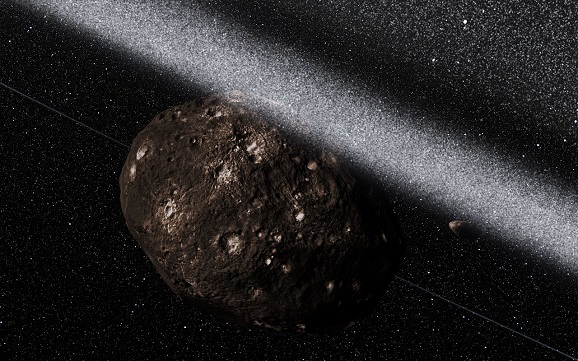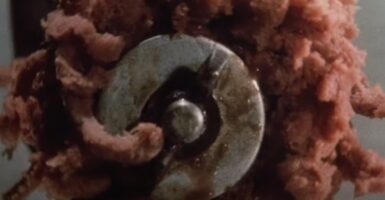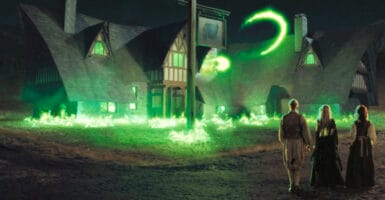The First Non-Planet With Rings Has Been Discovered
This article is more than 2 years old
 Don’t call it a comeback, er, an asteroid. Unless you’re not interested in being technical, that is, as the relatively tiny 10199 Chariklo is the largest known “centaur” — half asteroid/half comet — in the universe. Beyond this particular distinction, Chariklo is also the first non-planetary body that has been found to have a ring system orbiting around it. Oh wait, not just one ring, but two! What a show off.
Don’t call it a comeback, er, an asteroid. Unless you’re not interested in being technical, that is, as the relatively tiny 10199 Chariklo is the largest known “centaur” — half asteroid/half comet — in the universe. Beyond this particular distinction, Chariklo is also the first non-planetary body that has been found to have a ring system orbiting around it. Oh wait, not just one ring, but two! What a show off.
This discovery was made by astronauts working at observatories in South America, including the European Southern Observatory’s La Silla site. Chariklo, which orbits the sun between Uranus and Saturn, was observed passing in front of the star UCAC4 248-108672 (Nickname: Lil’ UCAC4) back on June 3, 2013. And while astronomers were ready to see the star’s light dip as the quasi-asteroid passed in front of it, nobody was ready for the two smaller dips in brightness.
“We weren’t looking for a ring,” said Felipe Braga-Ribas of Brazil’s Observatório Nacional, “and we didn’t think small bodies like Chariklo had them at all, so the discovery — and the amazing amount of detail we saw in the system — came as a complete surprise!”
The ring system appears to be two highly dense rings that are between three and seven kilometers wide, separated by a distance of nine kilometers or so. That’s pretty huge, considering Chariklo itself is only 250 kilometers in diameter. Not taking the curvature into account, that means it would take less than three hours of normal driving speed to make it from one side of the rock to the other, passing through the middle.
Uffe Gråe Jørgensen of the University of Copenhagen’s Niels Bohr Institute brought the size of the centaur into light in an interesting way. He said:
I try to imagine how it would be to stand on the surface of this icy object, small enough that a fast sports car could reach escape velocity and drive off into space — and stare up at a 20-kilometer wide ring system 1,000 times closer than the moon.
I realize that Earth having space objects closer than they already are would probably mean our certain doom for one reason or another, but it sure would be nice to get a better view every so often.
For now, the rings are going by the names Oiapoque and Chuí, named after a river and stream in the northern and southern parts of Brazil, respectively. And there’s no reason to think this is the last surprise Chariklo may give us, as Braga-Ribas says, “It’s likely that Chariklo has at least one small moon still waiting to be discovered,” as implied by the likely way the rings were created. Namely, they think it’s just debris left over after some kind of huge collision, much like the way our own moon was formed.
Below is a video of Chariklo totally fronting to that star. Space!












